Read the Beginners Guide to Buddhism and discover the largest religion in Thailand. Mostly everyone supports the Theravada Buddhism. Sometimes it’s called the southern Buddhism. Theravada Buddhism is practised in Thailand, Laos, Burma and Cambodia. The Thai culture, arts and daily life is strongly influenced by the Buddhist faith. Learn about the history, the life of monks, animism, the spirit houses, architecture and festivals.
Table of Contents
The Buddha
Buddhism is originally from India and dates back to the 6th century BC. The founder was Siddharta Gautama, 560-480 BC. He is born in Lumbini in southern Nepal. At an early age he realised humans were suffering by diseases, death and old age. He left his wife and child to live an ascetic life. It did not bring him happiness. After meditation underneath the Mahabodhi Tree in Bodh Gaya, India, he came to enlightenment. He became the Buddha. Or the Awakened One.
When someone awakens it means they have woken up unlike most who are asleep. The Buddha woke up to the true nature of reality and can see the world as it is. The Buddha must achieve liberation, called Nirvana. It means to extinguish the fires of desire, ignorance and hatred to break the cycle of suffering and rebirth.

Against brahman
Early Buddhist texts show criticism towards the brahmin religion and caste system. The brahmans follow the eternal Vedas, from which Hinduism arises. The Buddha did not accept these texts as divine and did not value them. The Buddha did not agree with the rites and practice of the Brahmans. He believed they were not useful for spiritual advancement. He strongly criticized animal sacrifice that has been taught in the Vedas. The Buddha denied brahmins claim of superior birth and the entire caste system.
Four Noble Truths
In Buddhism there are Four Truths: dukkha, samudaya, nirodha and magga.
- Duhhka: life is about suffering. It’s a characteristic of living in the realm of samsara (the world).
- Samudaya: The cause of suffering comes together with cravings, desire and attachment. Humans are imprisoned in the unwholesome cycle of birth, death and rebirth.
- Nirodha: To let go of dukkha one must renounce and let go of these cravings.
- Magga: the only way out is to follow the Noble Eightfold Path; correct understanding, exist, strive, meditate, think, purpose, word and deed.
The Four Truths are identified as the first traditional teachings given by the Buddha. They are the most important teachings of Buddhism. The truths have a symbolic and propositional function. The symbolic function is the representation of the awakening and liberation of the Buddha. Followers can reach the same religious experience as him. As propositional function the truths are a framework of the Pali canon and early Sanskrit Buddhist texts. Pali canon is the standard collection of texts in the Theravada Buddhist tradition. There written in the Pali language. The truths are a framework for introduction and explaining the Buddhist thought. One has to understand and experience Buddhism on a personal level.
If one adheres to these truths humans can influence their karma. There are five commandments: do not kill, steal, cheat, lie or use alcohol, tabaco or drugs. Buddhism is not a religion but a philosophical system and way of life. There are no gods to be honoured. There are Buddhist monks but there is no church-like-organization.
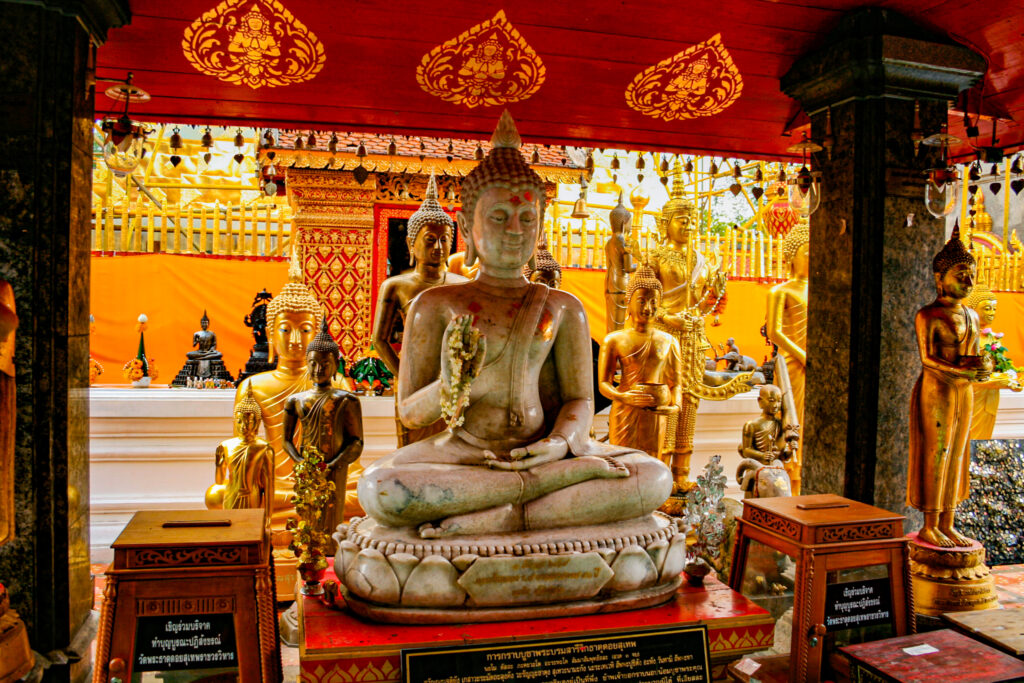
Theravada Buddhism
After Buddha’s death Buddhism fell apart in two different schools. The Mahayana Buddhism and Theravada Buddhism. The Mahayana refers to the universal enlightenment of all living creatures. It is called the Great Vehicle. This school has bodhisattva’s. They are mortals who have reached enlightenment but who are staying on earth to lead the way to others. The Mahayana Buddhism is practised in China, Nepal, Japan, Vietnam and Korea.
The Theravada Buddhism is known as the School of Elders. They refer to the individual salvation without interference of others. This school is called the Small Vehicle. Who reaches enlightenment on his own becomes an arhat. The status is reserved for monks. Other humans can only work on their karma during their life on earth and gain a higher position after rebirth. They can raise their karma by doing right. Examples are to give alms to monks and donate to temples. Followers of the Theravada Buddhism see themselves as the true followers of the Buddha as written in the holy scripts, the Tripitaka. Others find the movement conservative and dogmatic.
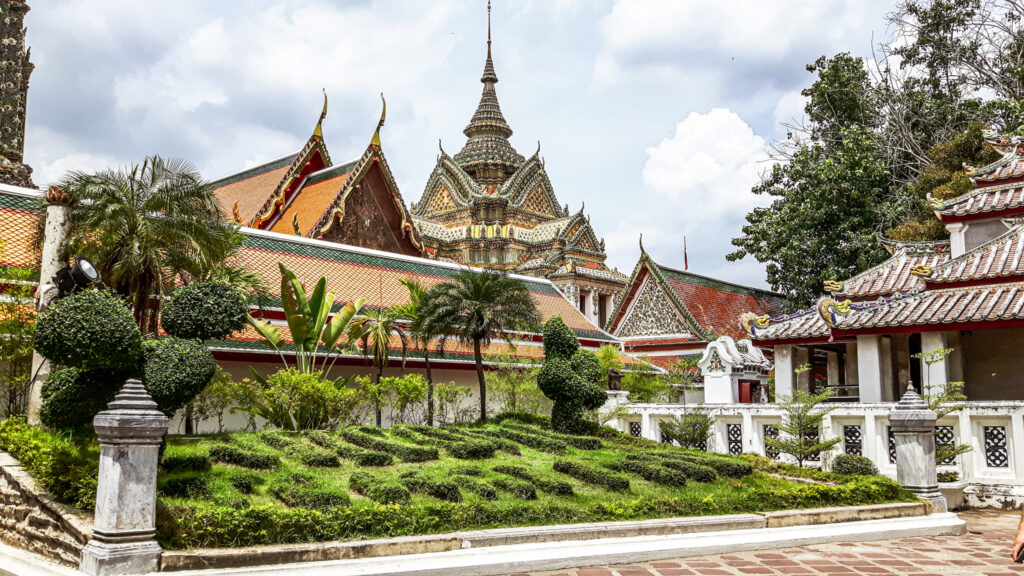
Buddhism in Thailand
Buddhism was spreading in India and during the 3rd century the movement was accepted in Sri Lanka. In the 7th century two Buddhist monks from Sri Lanka travelled to Thailand. They were looking for the Golden Country. They probably meant the Mon-Kingdom Dvaravati with the capital city Nakhon Pathom (west of the Bangkok today). The monks arrived in a prosperous port city with a population supporting an elementary form of Buddhism. The Thai emigrated from south China to the Mon country and adapted the new religion.
The final version of Buddhism in Thailand was a similar version of the movement from Ceylon (Sri Lanka). In the 13th century King Ramkhamhaeng (1279-1298) invited the Theravada monks to spread Theravada Buddhism in Thailand. When the Kingdom of Sukhothai was destroyed and was replaced by the Kingdom of Ayutthaya the Theravada Buddhism was still practiced. The rulers of the new Kingdom built numerous temples and monasteries.
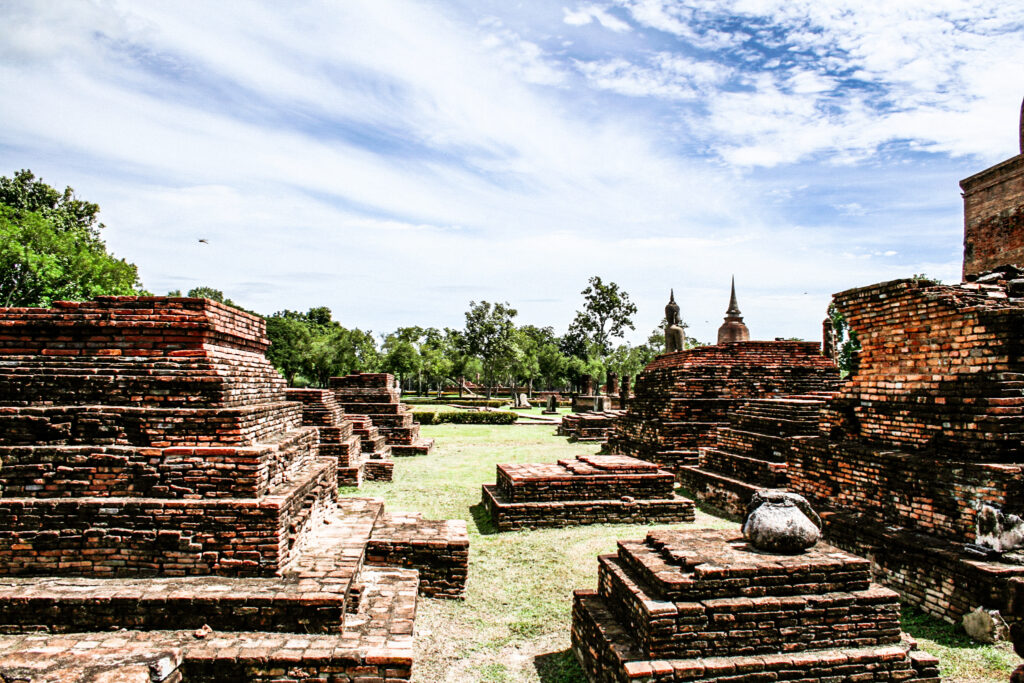
The Burmese attacked Ayutthaya in 1767 and were very destructive. The Rama Dynasty repaired the damage. One of the main advocates of the Thai Buddhist culture was King Rama IV (1851-1868). He was a monk for 27 years. In this period a major revival of Buddhism took place. The Theravada Buddhism in Thailand is strong and vital until this day.
Buddhism in daily life
Buddhism is integral part of the daily life for the Thai. The path to Nirvana is equalized by giving alms to monks, donations at the local temple and visit the temple. These three habits are visible on a daily bases. The Buddhist faith gives structure to daily life, determines the dates of religious holidays and the norms and values of in the Thai culture. The Thai can easily switch between the modern and hectic life and the ancient old and repentant meaning of Buddhism. Some people follow the strict regulations of the Buddhist faith. Strictly speaking it’s forbidden to drink liquor, kill and eat animals, participate in lottery and read erotic literature. But the Buddha also said the bow cannot always be tense!
Monks
The orange dressed monks are an integral part of the Thai culture. Every Thai man is expected to be a monk for a short period of time. Usually the young men go to a monastery when they finish school and before they start working. Some monks dedicate their entire life to religion. For rural families it’s a great deal to have a monk in the family. It gives the family prestige and happiness. Women can also join the Buddhist community. They are called Chi, while men are called Phra. Women shave their heads too and wear white clothes. Some women join for a short time to cure a disease. Others stay longer for spiritual guidance. It’s estimated there are 200.000 monks in Thailand living in circa 30.000 monasteries.
Poverty
The monks live in self-imposed poverty. They only have an orange garment, sandals, bag, begging bowl and tools for shaving and sewing. In line of the Buddha’s teachings the monks live to suppress desire and follow the path of enlightenment. Monks are not allowed to touch women. Be polite and do not try to shake his hands. The life of the monks largely takes places within the monasteries. The older monks teach the younger ones about the Buddhist way of life. Sometimes they also teach monks to read, write and to calculate.
The monastery and the temple are the centre of a village or neighbourhood. The leader of the monastery is the village elderly. He is advisor and maintains a good relationships with the local public administration. At many social and culture activities the cooperation of the monks is requested. In rural areas the only way for students to learn reading and writing is at the temple. Some monks are specialised in healing illnesses or magical practices. Monks fulfil a prominent role at ceremonies. They start praying and meditating first, bless new buildings, are attending funerals and honour relics.
Community
The Sangha is the Buddhist Community and is divided in two orders; the Thammayut and the Mahanikai. The Thammayut is smallest order. Just one out of 35 monks belongs to this order. Members of the Thammayut are highly regarded and live a spartan life. They eat around noon and not more than one time per day and only what is given to them in their begging bowl. The Thammayut monks have to learn about meditation, general teachings and teachings of the holy books. Members of the Mahanikai are allowed to eat twice a day. They eat more than just what’s given to them in their begging bowl. The Mahanikai monks are allowed to specialize in their studies.
Monks are going around and beg for food at people’s home. The givers thank the monks for passing by. They are thankful to be beneficent and the opportunity to give alms. Monks are not allowed to touch hands of a woman and donations should be placed into their begging bowl.
Animism
Buddhism is the largest religion in Thailand but not the only one. Forms of animism and spirit worshipping are still practised and implemented into the Buddhism faith. The Thai have accomplished to fit in the spirit world into the formal teachings of Buddhism. Most people in Thailand believe that objects, creatures and places posses a certain spiritual essence. They are convinced these forces are intertwined in daily life.
Amulets
Tattoos and amulets are the protectors of the physical body. Amulets can have images of animals, hollow tiger teeth, photos of monks and images of the Buddha. Most people keep an amulet at the house altar and others wear an amulet around their neck. In Bangkok there is an amulet market. Most images are from the Buddha, honoured monks, late kings and queens or ancestors.
Shaman
Future predictors and shamans play a prominent role. Animism still has a strong influence on the Thai culture. Buddhism is a very tolerant religion and never rejected the animism rituals. Many future predictors and shamans are monks. People consult them in case of problems, diseases, accidents and disasters. The unexplainable needs to be explained. People seek protection against the spirits who cause problems.
Spirit house
The spirit houses, Phra Phum, can be found at every house and building in Thailand. It’s a great example of animism. The Phra Phum is a small roofed structure and usually placed on a pillar. The spirit house is a shelter for the spirits that could cause problems. To appease the spirits the residents daily place food and flowers in front of the spirit houses.
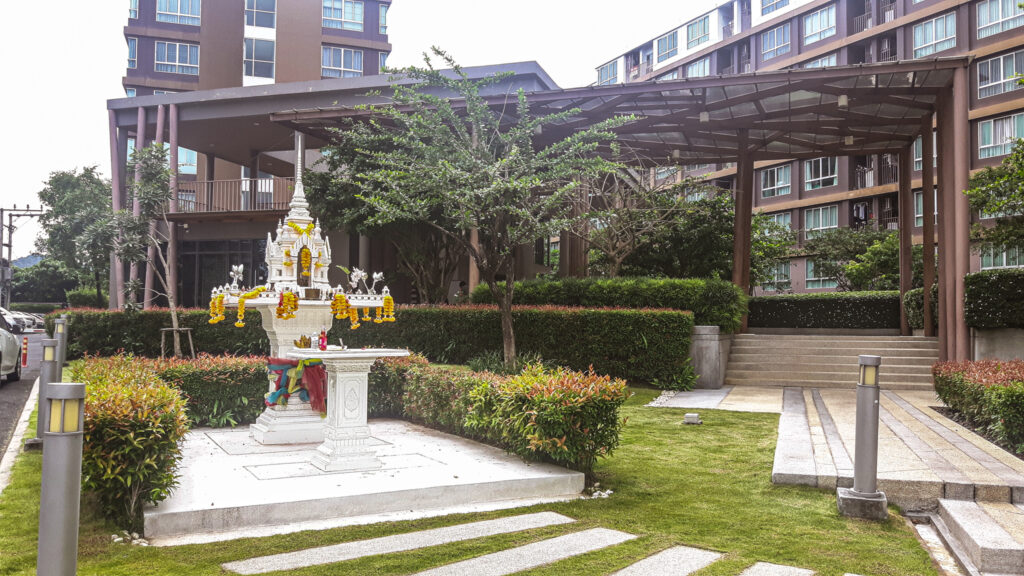
Buddhist art
Art, culture and religion in Thailand are closely related to Buddhist expressions. In the western world music, literature and paintings are influenced by the Catholic and later on the Protestant church culture. It’s the same in Thailand. The Thai culture is derived from the Theravada Buddhism and animism. Around the end of the 19th century a more international culture developed in Thailand. The Thai art is strongly influenced by indigenous groups as the Mon and the Khmer. Cultural influences also come from India, China and neighbouring countries as Cambodia and Burma.
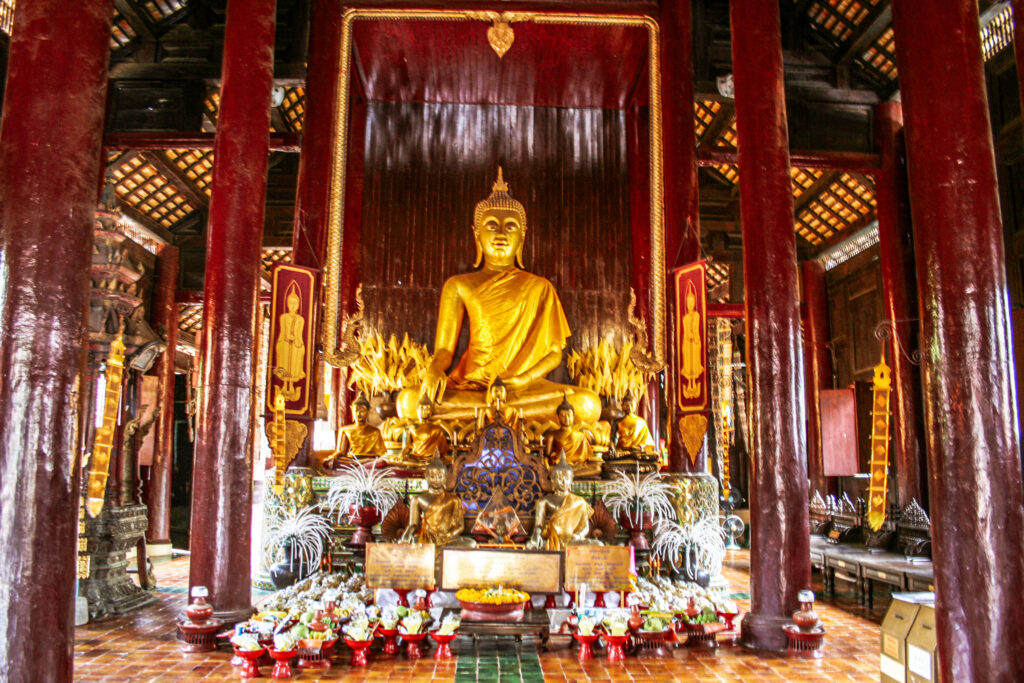
Architecture
The Buddhist character has a strong presence in the architecture and sculpture art. The most eye-catching are the numerous temples and the Buddha sculptures.
Wat
A Thai Temple is called a wat. The temple is enclosed by walls. The entrance gate is often guarded by nagas, a mythical serpentine and half human and half cobra. They look like a dragon. A temple complex has multiple buildings. In the centre of the complex is the bot, the most important and holiest structure of the wat. It’s the main chapel were monks come together and believers sacrifice and practice.
Another structure at the temple complex is the viharn, a prayer and meditation space for monks. Two other notable structures are the chedi and prang. A chedi is also named a stupa, a circular tower with a peak. Inside a stupa they keep relics like bones and hairs of the Buddha. A prang is more massive and rounder than the chedi. Researchers assume the prangs are a derivative of the Cambodian temples of Angkor What. One of the largest prangs in Thailand is Wat Arun in Bangkok.
Buddha sculptures
One of the most prominent manifestations of Buddhism is the image of the Buddha. In contrast to the Islam and orthodox Judaism images of the supreme being are made, adored and worshiped. Images of the Buddha are miraculous uniform when you take into account Buddhism is widespread throughout Asia. The face of the Buddha is changed over time as a result of cultural changes. The main features remained, such as the long ears with stretched ear lobes, the smile, wide mouth and curly or pointed hair. During the Ayutthaya period in the 17th and 18th century the Buddha got his traditional Thai conical crown.
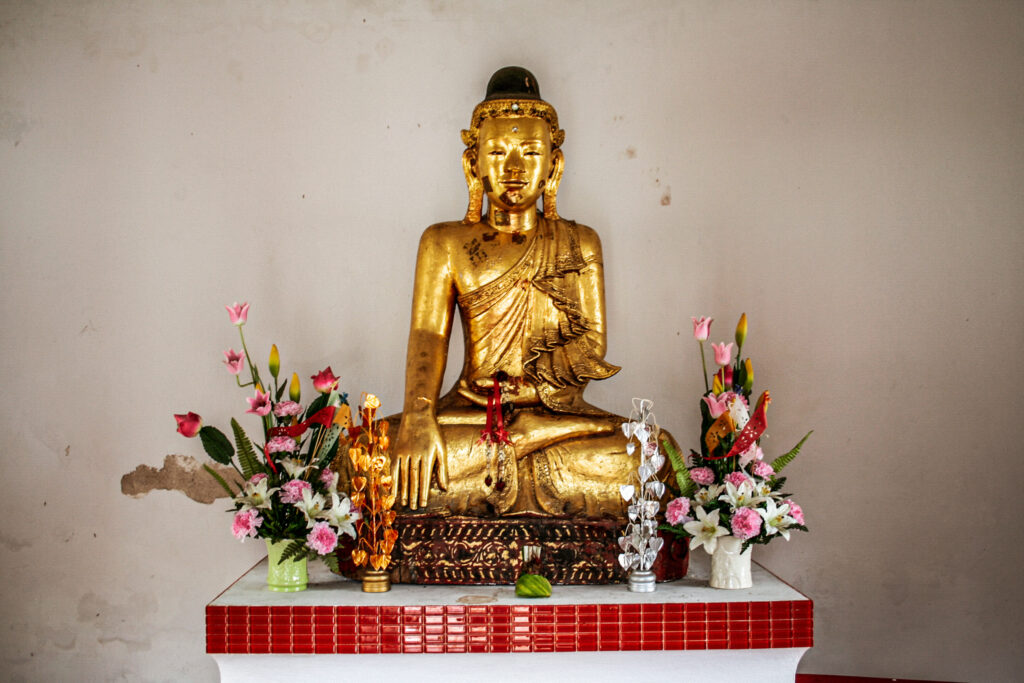
Traditional Thai homes
A reuan thai is a traditional Thai house made of teak wood. The houses have one or mores rooms and a covered veranda. The veranda is a place to rest. A characteristic are the steep roofs with decoration at the end. The traditional houses are built on two metre high wooden posts. The elevation protects the houses and residents against floods and wild animals. The space underneath the house is used during dry seasons to cook, as storage for agricultural instruments and machines and to keep livestock. Nowadays is not allowed to cute teak. The use of bricks is increasing yet houses are still made of bamboo and palm leaf in southern Thailand.
Festivals
Buddhists celebrations follow the lunar calendar. Most festivals are around or on the day of the full moon. Besides the Buddhist festivals there are also remnants of other religions like Hinduism. The festival of the first plough for example is a Hindu festival. Many festivals have a commercial function next to the religious and traditional meaning. Foreigners are welcome at festival as long as they take into account the religious character and traditional value of the celebration.
In The World’s Jungle – Travel articles
Interested to know more about Hinduism, the caste system and the Indian culture? Read the Beginners Guide to Hinduism. You like to discover places to visit in Thailand? Admire the photos of the wonderful temples of Chiang Mai. Or read more about the history of the Sukhothai Kingdom.
Are you searching for practical info? Read articles about how to set up a travel budget, how to plan a long term trip or download your personal packing list. Or find out which vaccines are recommended when travelling in Asia.
In The World’s Jungle – Personal Travel Guide
Do you need help setting up an itinerary or are you looking for unique places to stay? I can help you planning your holiday or business trip. Send me a message by filling out the contact form and let me know how I can help you. Read more about the services I offer and get in touch.
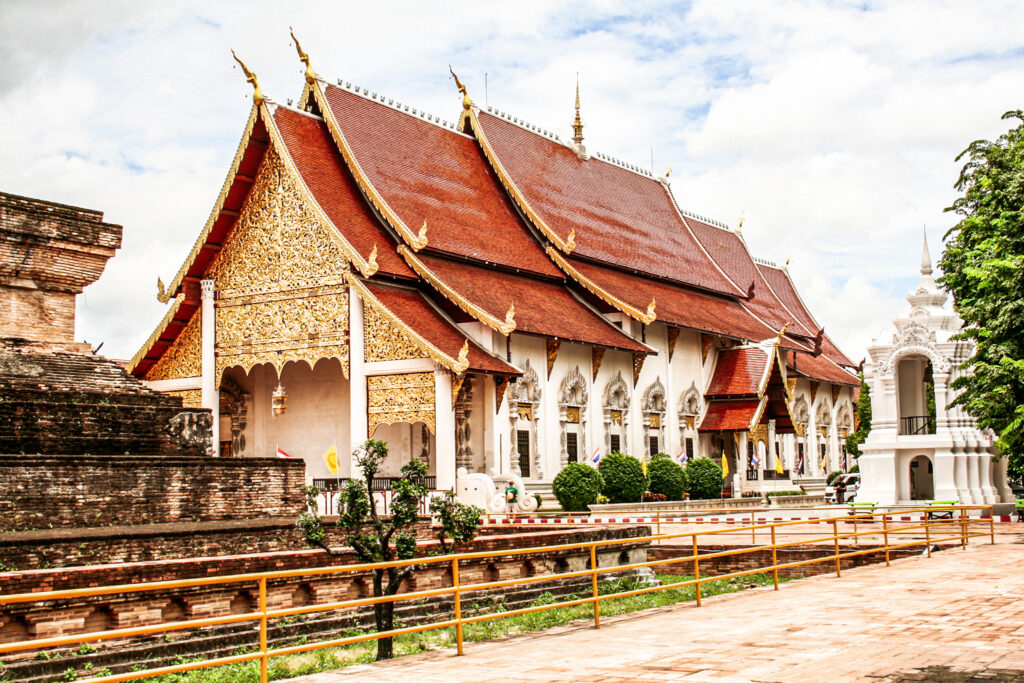
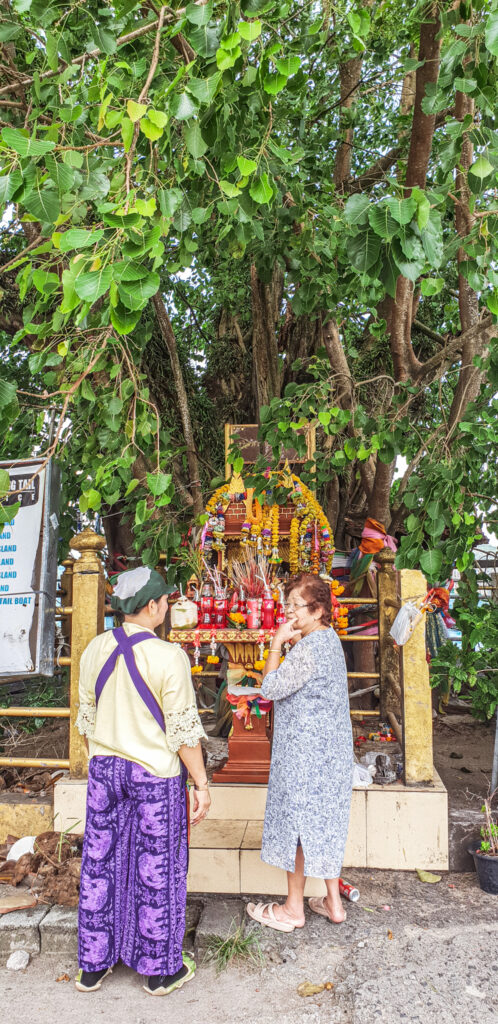
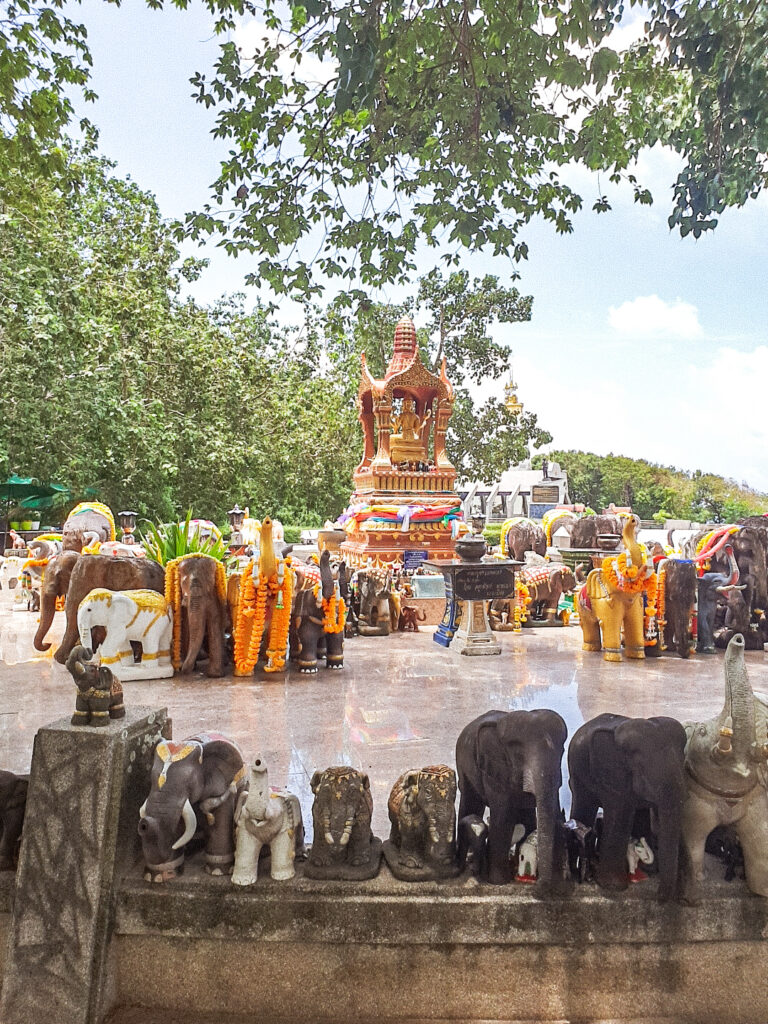
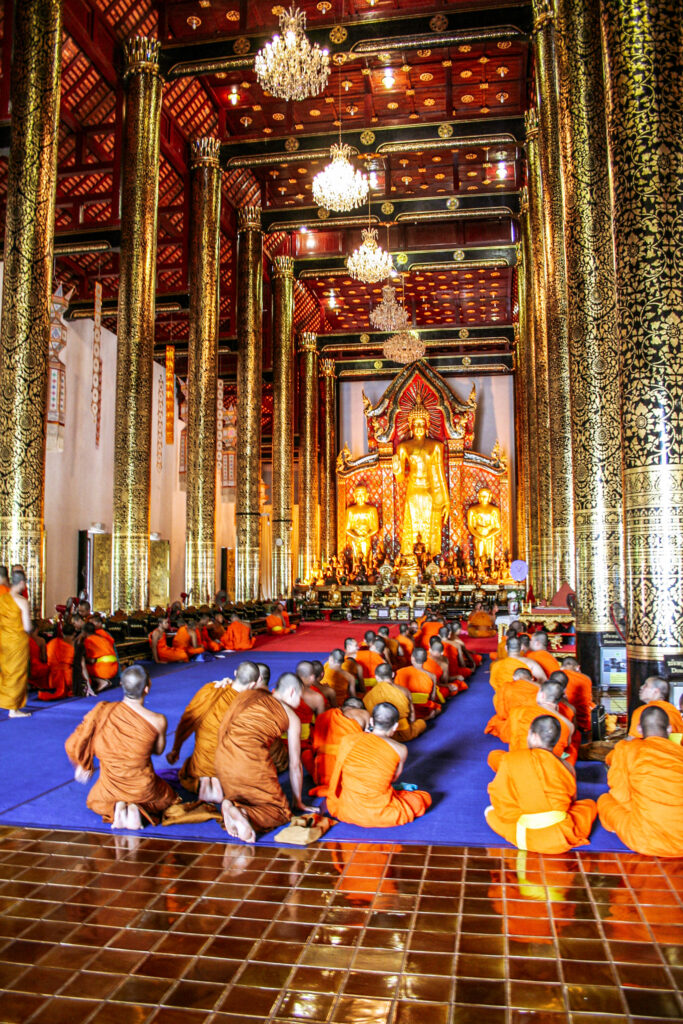
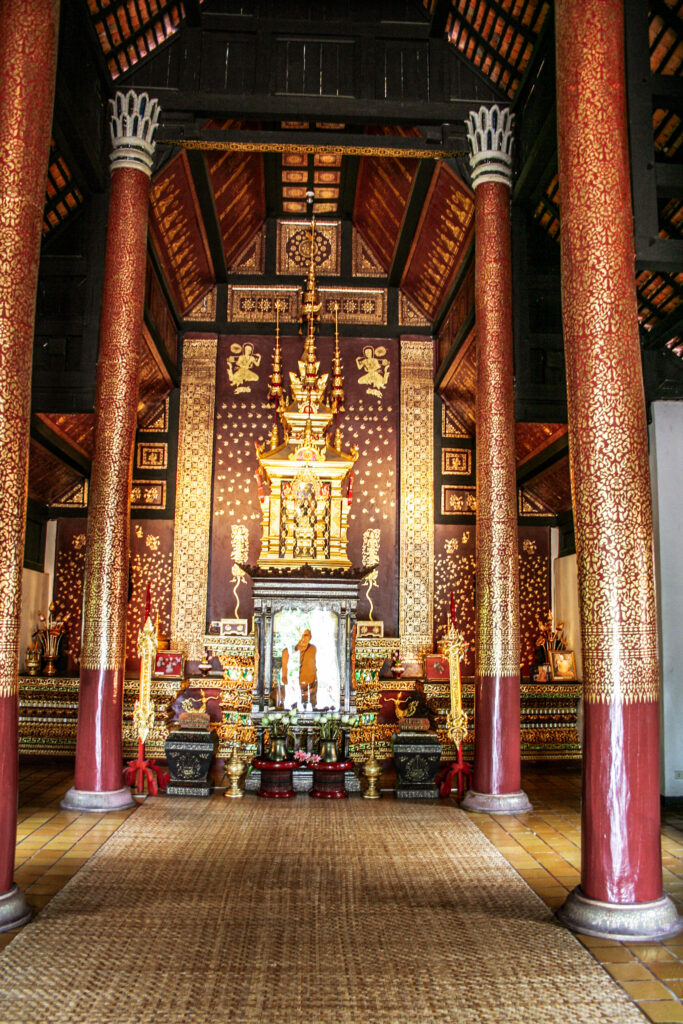
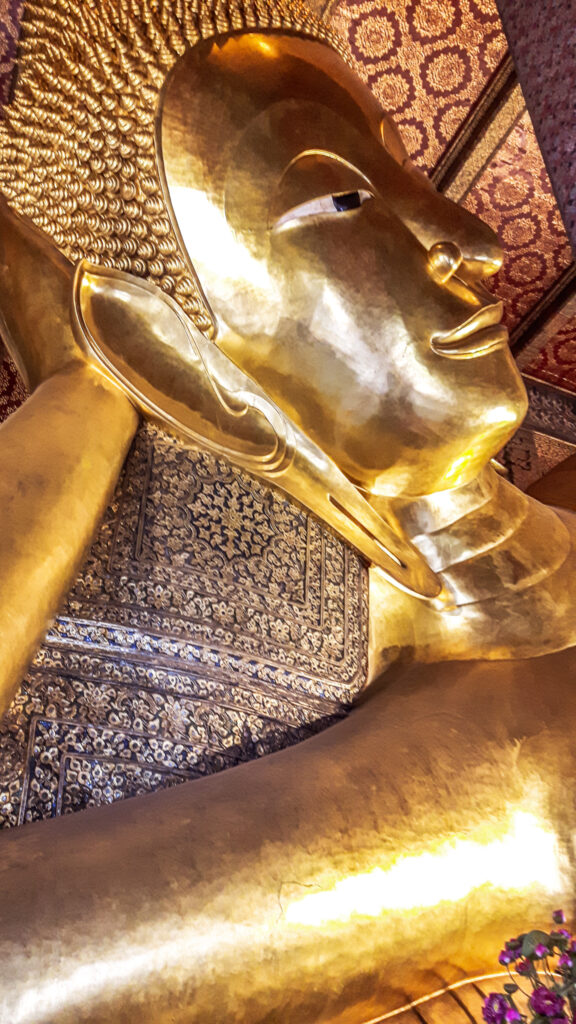

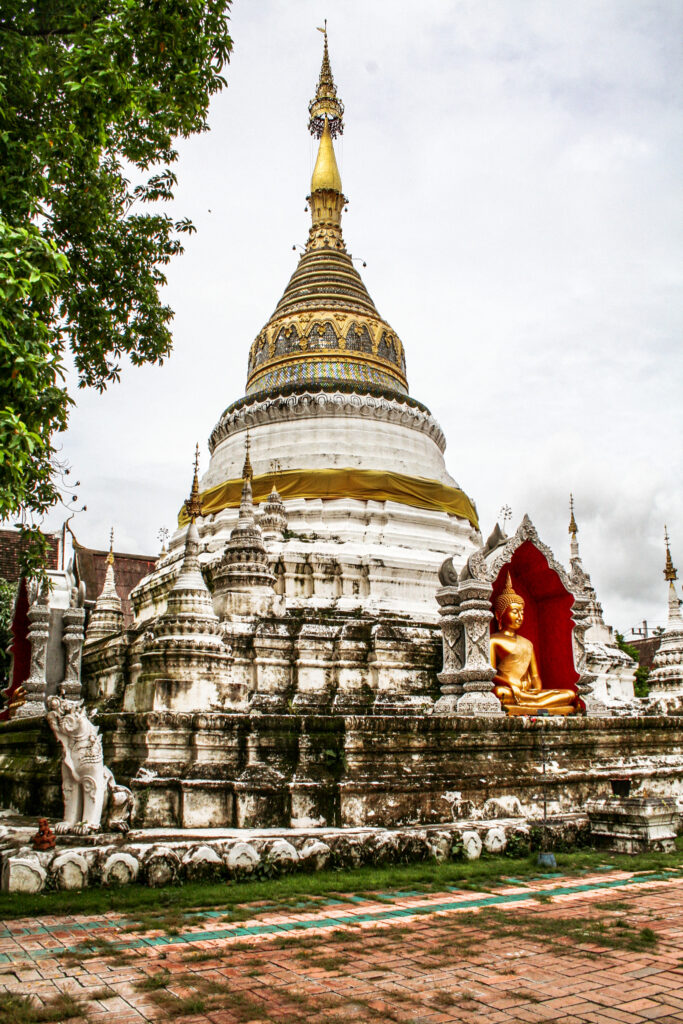
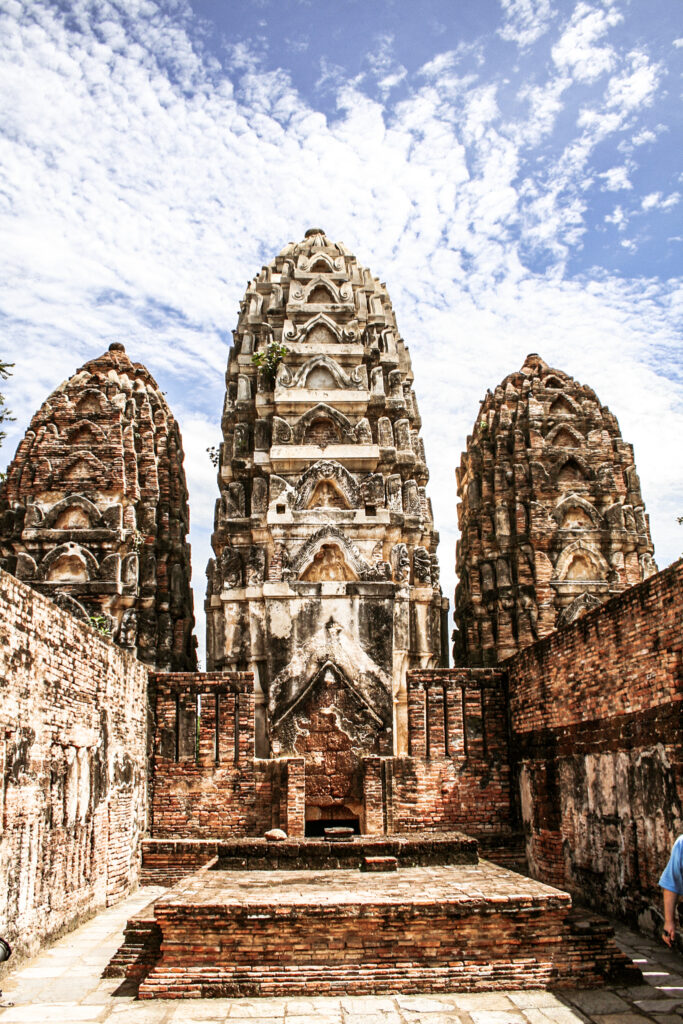
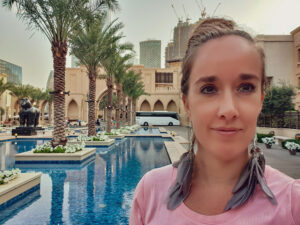
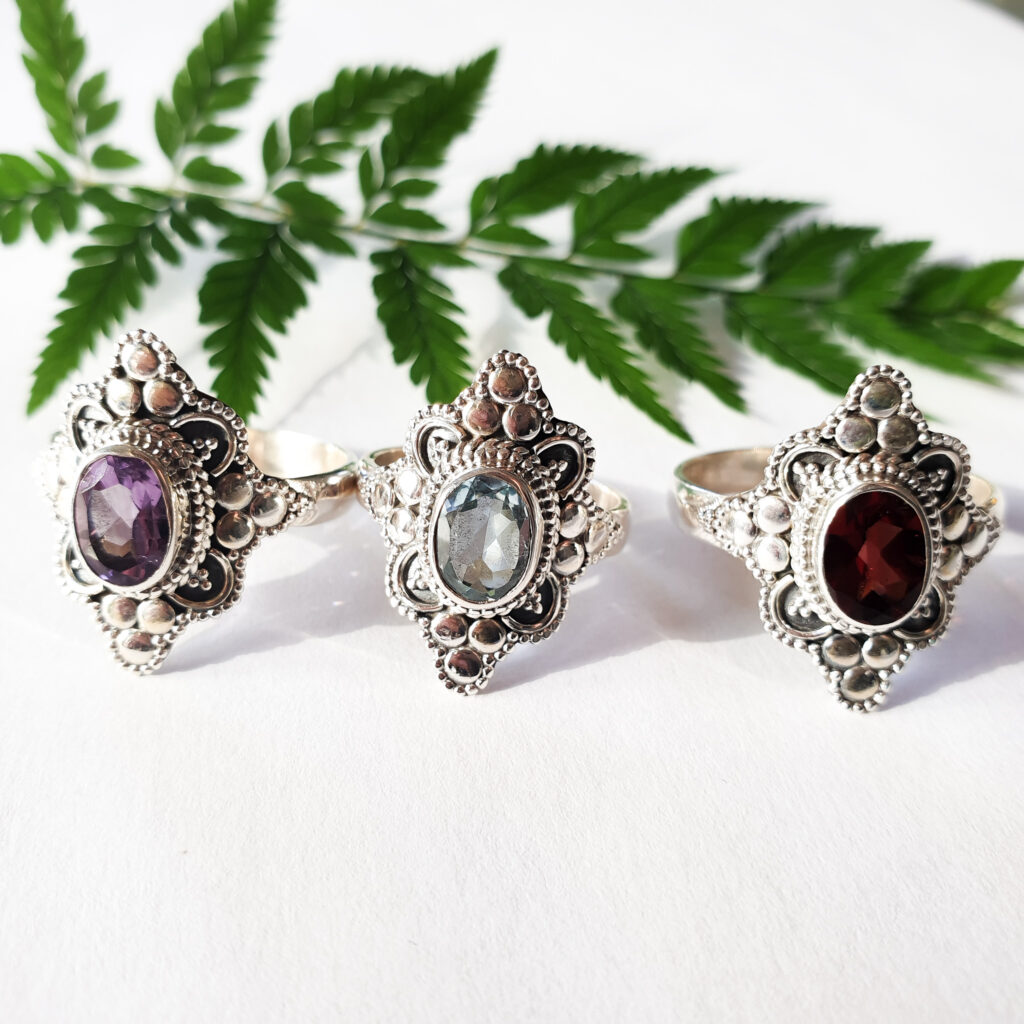
This Post Has 8 Comments
This was very educational – I must say that I learned a lot in it! Thank you for sharing this info. in the way that you did
Hola.
Thank you Lisa Marie. Great to hear you liked the article and you learned something about Buddhism too.
Adriana
Wow. I couldn’t but subscribe to this amazing blog.
Hola Sudharsan,
Amazing to hear you like In The World’s Jungle. Thank you for the nice compliment. I hope you find it informative and useful.
Adriana
Wow amazing photos and temples,
buddhism is fascinating. Thanks for clearing
it up..
Hola Gabi,
Buddhism is a harmonious way of life. I learned a lot while writing about it. I’m glad I cleared things up for you.
Adriana
Great Overview! I very much respect the philosophies of Buddhism and strongly believe in daily meditation. I’m always interested to learn more about it.
Hola Steven,
I agree with you about meditation. It clears my mind. Perhaps I’m going to write more about Buddhism in the future.
I have to read and study more about the subject before being able to write an in-depth article about Buddhism. Thank you for the nice compliment.
Adriana